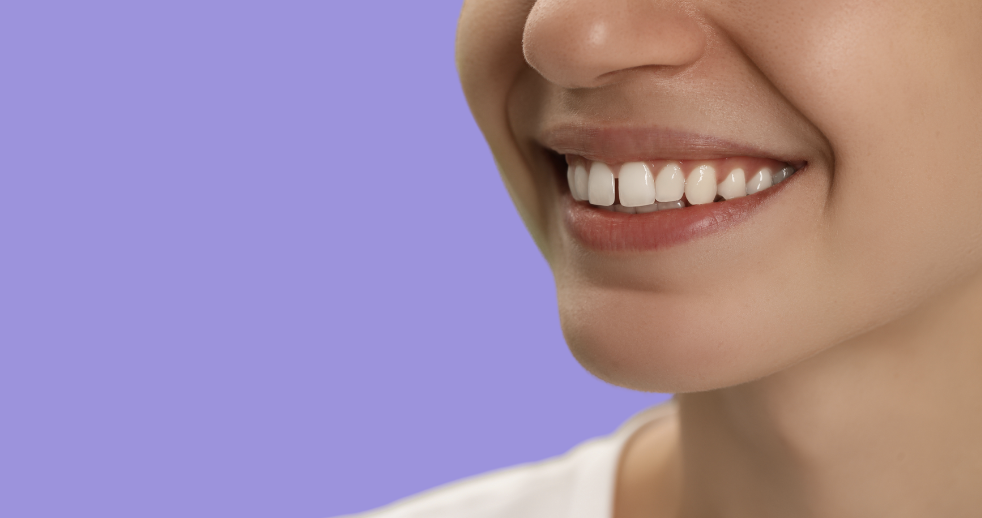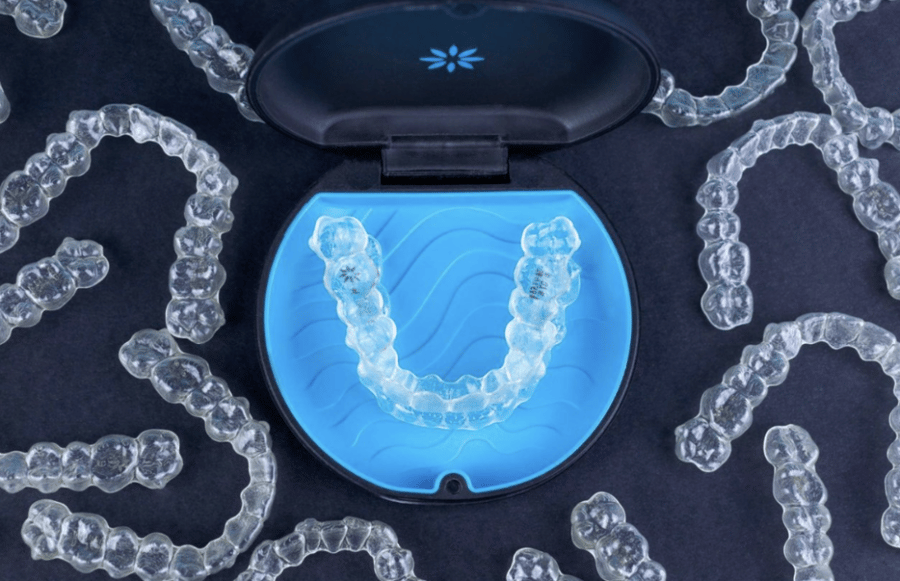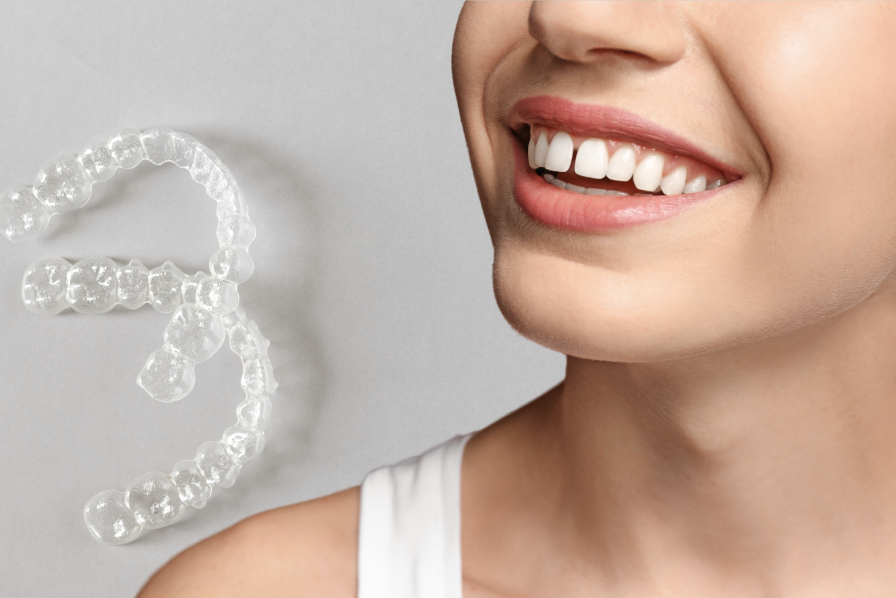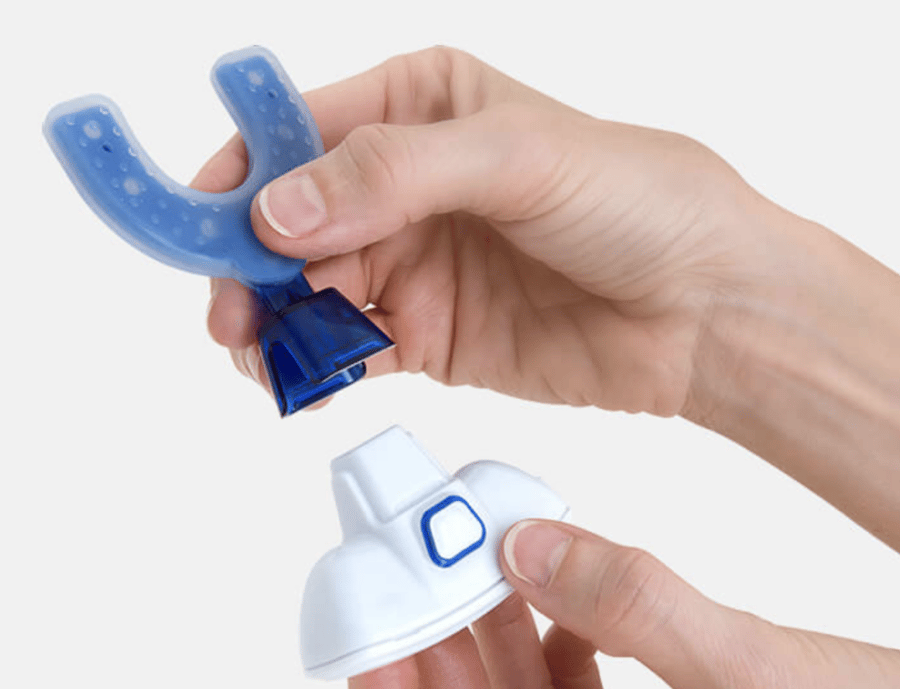
When it comes to orthodontic treatments, Invisalign is a popular choice among those looking for a less noticeable, more comfortable solution compared to traditional braces.
At NYC Smile Design, we frequently encounter patients curious about whether Invisalign can effectively close gaps between their teeth.
Leveraging our extensive experience with Invisalign treatments, this blog aims to illuminate Invisalign’s capabilities in resolving dental spacing issues, guiding you toward an informed decision regarding your orthodontic care options. With a focus on personalized treatment plans, we’re here to help you understand how Invisalign can be tailored to meet your specific needs for a beautifully aligned smile.
Understanding Invisalign
Invisalign uses a series of clear, custom-made aligners designed to gradually shift your teeth into the desired position. These aligners are virtually invisible, making Invisalign a discreet alternative to metal braces. But beyond aesthetics, Invisalign offers the flexibility of removable aligners, allowing for easier eating and oral hygiene.

The Process When Using Invisalign
Invisalign’s process begins with a detailed assessment of your dental structures. This initial step often involves taking digital scans or impressions of your teeth, which are then used to create a precise 3D model of your mouth. This technology allows for meticulous planning of your tooth movements throughout the course of treatment. Additionally, a full set of xrays and in many practices, a 3D CBCT (cone beam computerized tomography), are taken to assess the bone levels, root positions and angulations, as well as the periodontal health of your teeth. A CBCT can also be used to evaluate your jaw joint (TMJ) position and your airway to assess current conditions. To make your treatment more comprehensive, this information is used to analyze the influence they have had on the development of your gapped teeth and to determine if adjunctive treatment may be needed with your orthodontic Invisalign treatment.
After the assessment, a treatment plan is designed by your dentist on the Invisalign online platform which requires some time to create and modify. Prior to approval of the design and fabrication of your aligners, there may be a series of modifications that your dentist will collaborate with the Invisalign technician creating your aligners. Once approved, a series of clear, custom-made aligners are produced specifically for your treatment plan. Each set of aligners is worn for about one – two weeks before moving on to the next in the series, gradually shifting your teeth toward their final, desired positions. The number of aligners needed varies from patient to patient, depending on the complexity of the tooth movement required.
Invisalign’s approach offers several advantages, including the ability to remove the aligners for eating, drinking, brushing, and flossing, promoting better oral hygiene than traditional braces might allow. Additionally, the process includes regular check-ins with your dentist or orthodontist, usually every 6 to 8 weeks, to monitor progress and make adjustments as needed. This ensures that your treatment is progressing as planned and allows for any necessary modifications along the way.
The preparation for receiving Invisalign aligners, including the initial dental scans, x-rays and the creation of a personalized treatment plan, sets the stage for a successful orthodontic journey. This preparatory phase is crucial for achieving the optimal alignment of your teeth, closing gaps effectively, and ensuring a smoother, more predictable path to your new smile.
Closing Gaps with Invisalign
Invisalign is indeed capable of closing gaps between teeth. This innovative orthodontic solution can address various dental spacing issues, from minor gaps to more significant spaces, depending on the individual case. The key to Invisalign’s effectiveness lies in the way the plastic shells are able to physically move the teeth. The shell completely covers the tooth and can create specific pressure points and push the tooth into very specific directions. The incredible amount of research and data amassed over the past 20 years by the Invisalign company and the dentists using their technology, has led to many great features and improvements in tooth movement. Most patients do not know this, but the complete covering of the tooth by the plastic shell is a tremendous advantage to moving teeth in specific directions that in many cases can be controlled more carefully and executed better, than traditional wire and bracket treatment. Additionally, the custom design of each aligner set, which can be reverse-engineered from the final position the dentist wants the patient’s teeth to be, is tailored to the unique needs of the patient’s mouth.

What also makes Invisalign particularly effective, is the precision with which each aligner is designed. Leveraging advanced 3D imaging technology, every set of aligners is customized to the specific contours of the patient’s mouth and teeth, ensuring targeted and efficient tooth movement throughout the treatment.
Factors to Consider
The journey to close gaps with Invisalign is influenced by several critical factors, each playing a role in shaping the treatment’s outcome:
Size and Location of Gaps
The dimensions and positioning of the gaps in your smile can dictate the complexity of your Invisalign treatment. The root position and angulation of the gapped teeth must be considered. Smaller gaps, especially those located at the front of the mouth, can often be closed more easily. In contrast, larger gaps or those involving back teeth may necessitate a more comprehensive orthodontic strategy, sometimes incorporating additional treatments and movements to achieve the desired result.
Cause of the Gaps
Addressing the underlying reason why the gaps have occurred must be done either prior to Invisalign treatment or during the treatment. Some of these causative agents include bruxism- clenching and grinding,a tongue thrust habit, poor swallowing habits, and airway obstruction. Treatment for these can include Botox therapeutic to control bruxism, myofunctional tongue therapy, and a consult and/or treatment with an ENT for airway obstruction.
Overall Dental Health
The foundation of any successful orthodontic treatment, including Invisalign, is healthy teeth and gums. Before embarking on the path to close gaps, it’s essential to address any underlying oral health issues. Conditions such as gum disease or untreated cavities can hinder the effectiveness of Invisalign and should be resolved to ensure the best possible start to your gap-closing journey.
Patient Compliance
The role of the patient in the success of Invisalign treatment cannot be overstated. Adhering to the recommended daily wear time of 20-22 hours is crucial. This commitment ensures that the aligners can exert the necessary pressure to shift teeth into their new positions gradually. Non-compliance can lead to extended treatment times or less than optimal results, emphasizing the importance of wearing your aligners as prescribed.
Collaborating with Your Dentist
Choosing the right treatment plan for closing gaps is a decision that should be made in collaboration with your dentist. Through a personalized consultation, you’ll discuss your aesthetic goals, review your dental history, and develop a customized treatment plan aimed at achieving your ideal smile.
Technological Advances
To enhance the Invisalign experience and ensure the utmost precision in treatment progression, we might suggest incorporating innovative tools like Dental Monitoring or VPro 5. Dental Monitoring utilizes smart technology to allow for remote monitoring of your treatment, enabling your dentist to track your progress through regular updates sent directly from your smartphone. This cutting-edge approach reduces the need for frequent in-office visits while ensuring your treatment stays on track.

Similarly, VPro 5 is designed to complement your Invisalign treatment by facilitating more efficient aligner seating and potentially reducing treatment time. This device employs gentle vibrations to help your aligners fit more snugly against your teeth, which is critical for advancing to the next set of aligners on schedule.

Your Choice
Invisalign offers a promising solution for individuals looking to close gaps between their teeth without the drawbacks of traditional braces. With its custom aligners and discreet appearance, Invisalign provides both effectiveness and convenience. However, the best way to determine if Invisalign can address your specific dental gaps is to consult with a professional.
At NYC Smile Design, we’re here to guide you through every step of your smile transformation journey. If you’re considering Invisalign to close gaps in your smile, contact us to schedule a consultation. Let us help you achieve the beautiful, gap-free smile you’ve always wanted.
Topics:

